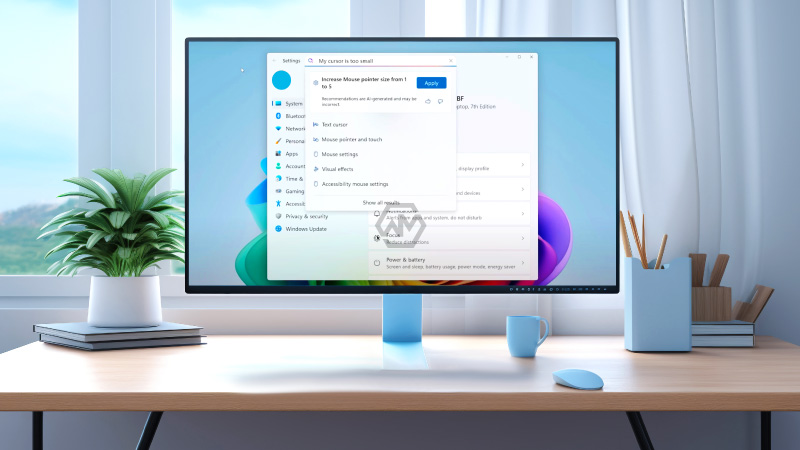- Microsoft’s new Mu AI enables natural language-based navigation in Windows 11 Settings.
- Runs locally on-device using Copilot+ PCs’ NPUs for instant responsiveness.
- Optimized through LoRA fine-tuning, synthetic training, and user context modeling.
Microsoft has unveiled Mu, a powerful on-device AI model designed to revolutionize how users interact with Windows 11 Settings. Rather than navigating through complex menus, users can now input natural language prompts like “enable dark mode after sunset” to directly execute actions.
What sets Mu apart is its compact design. With only 330 million parameters, it delivers performance close to much larger models like Phi-3.5-mini, from which it’s distilled.
Mu in Motion: The AI Assistant That’s Redefining Windows 11 Settings
Mu is not just fast—it’s context-aware. It performs better when users input descriptive queries like “reduce screen brightness during night hours” versus vague keywords like “brightness”. To ensure robust performance, Microsoft implemented synthetic labelling, noise injection, and a multi-layered transformer architecture to improve semantic understanding and reliability under constrained resources.
Interestingly, the Mu AI model navigates ambiguity by prioritizing the most commonly used settings. For example, if a user types “increase brightness”, Mu defaults to the internal display, reducing misinterpretation. This design choice reflects Microsoft’s effort to ensure simplicity and relevance for general users, while continuing to improve context disambiguation for future updates.
The AI model currently functions on Copilot+ PCs, leveraging hardware-accelerated NPUs to enable completely local execution. This not only increases privacy but also reduces reliance on internet connectivity, making system control more secure and universally accessible. By keeping computation local, Mu becomes an ideal example of edge AI that enhances user autonomy.
From a development perspective, Mu’s fine-tuning process involved custom data pipelines, use of Azure A100 GPUs, and strategic parameter scaling to fit within hardware constraints. This compact-yet-effective design philosophy could pave the way for AI models embedded in other OS-level tasks, supporting a more natural human-computer interface without bloated system requirements.
Microsoft’s Mu AI is quietly transforming system control by merging AI with everyday utility—making Windows 11 more intuitive, efficient, and user-centric.
“The best interface is no interface.” – Golden Krishna
This quote reflects the purpose behind Mu—simplifying human interaction with machines to the point where traditional interfaces become obsolete.



